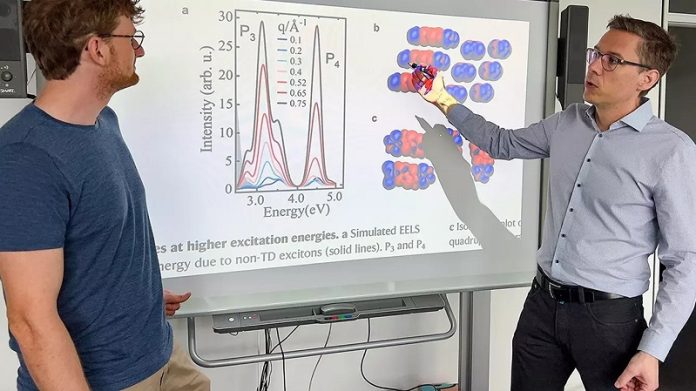
Solar power is like a gift from the sun, giving us loads of energy every day.
But when we try to catch this energy with solar cells, some of it escapes, making it tough for us to use organic solar cells to their full potential.
Imagine if we could build roads inside these cells for the sunlight to travel on; this is exactly what scientists at the Technical University of Munich (TUM) are trying to do using organic dyes to guide the energy efficiently!
Organic solar cells are like thin, light blankets that can catch the sun’s energy. They are flexible and can be placed on almost any surface, making them super versatile.
We can roll them up, spread them on walls, or even stick them on gadgets. They’re awesome but have one little problem—they sometimes struggle to carry the energy they catch to where it’s needed.
So, researchers like Frank Ortmann, a professor at TUM, are digging deep to understand how to make energy transport inside these cells smoother and faster.
Ortmann and his team are like sunlight detectives, studying how light and materials interact. They are mainly interested in something called excitons, which are like tiny packets of fuel from the sun.
When a solar cell catches light, it traps it in a special excited state, sort of like storing it in a battery, and that’s what we call an exciton. These excitons have to reach a certain spot in the cell to turn into electrical energy that we can use.
Here’s where it gets exciting! Ortmann and his team found that we could build ‘highways’ for excitons using special organic dyes.
They found that molecules in these dyes can guide excitons quickly to where they need to go, like turbocharging them! This is crucial because excitons live shortly; the faster we can move them, the more energy we can get out of the cell. The more energy we can extract, the better these solar cells become at powering things.
The team used special measurements and models to watch how excitons zoomed through these dye molecules. They found that using these dyes, the energy value achieved was much higher than usual, forming a kind of superhighway for the excitons.
This breakthrough means that we could design more efficient paths for exciton transport, making organic solar cells and other organic light-emitting devices perform even better!
These organic dyes, called quinoid merocyanines, are not just special because they can build superhighways for excitons, but they are also excellent at catching visible light due to their chemical structure. This makes them perfect candidates for being the active layer in an organic solar cell.
In simpler words, scientists are figuring out how to speed up the energy transport inside organic solar cells by creating fast lanes for energy packets. This can help in developing better, more efficient solar cells and light-emitting devices.
This study shines a light on a brighter, more sustainable future where organic solar cells could help us use the sun’s gift more effectively, making the most out of every sunbeam we receive!
Follow us on Twitter for more articles about this topic.



